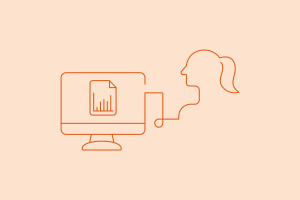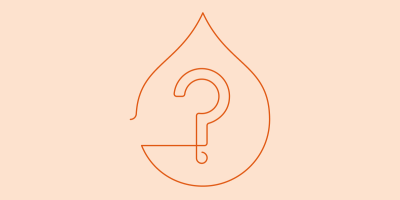
Collection
A Marketer's Guide to Customer Data Platform Use Cases

Collection :
Marketers in today’s digital-first world face increasing pressure to drive engagement, sales, and, ultimately, revenue but they can’t make good on those goals unless they deliver tailored experiences for each visitor, prospect, and customer. Creating seamless, intuitive, and personalized experiences requires data and an understanding of your audience’s demographics, behaviors, preferences, and more.
A customer data platform (CDP) is an organization’s foundation for building data-driven, tailored experiences, and marketers are ensuring their success by adopting the technology. In fact, Acquia’s Customer Experience Trends Report found that eight in 10 (84%) marketers now place greater emphasis on first-party data as support of third-party cookies from major browsers will end in the near future. And 52% report their organization has adopted a CDP in the last 18 months.
But with so many options in the market (including technologies that are CDPs in name only), how do you select the right solution for your organization’s particular needs? The first step is to identify what you want to do with a CDP, so you can select the one with features and functionalities that deliver those use cases.
Seven CDP use cases
To identify the required capabilities your organization needs in a CDP and narrow your search for a solution, take a step back to look at what you want to do with your customer data. For inspiration, here are seven popular CDP use cases:
- Unified customer data
- Enhanced personalization
- Mapping the customer journey
- Optimized customer experience
- Multichannel messaging
- Fewer privacy risks
- Actionable analytics
Let’s take a look at each use case and what it may entail.
1. Unified customer data
Unifying customer data is perhaps the most common CDP use case. The first step in creating a data-driven customer experience is to compile a 360° view of your customer, but forming this view can be challenging when your data is scattered across systems and teams. A customer data platform must be able to unify data from any and all sources in your organization — from your website and call center systems to your customer relationship management (CRM) system and beyond. Without this, you’ll lack a single source of truth for your customer data, meaning your marketing efforts will be based on incomplete or inaccurate data and, therefore, likely fall flat.
2. Enhanced personalization
After collecting and unifying your customer data, and then cleaning and deduplicating it, you can mine that data to generate a more robust understanding of your customers, which will help you personalize their journey with your brand. Use your CDP to build segments of your customers based on their behaviors, so you can enhance your future engagements with them. Customer segments can be created based on a range of factors, such as product categories browsed, web pages visited, spending level, in-store engagement, and the like. Using these segments, you can deploy customized experiences that align with their behaviors and preferences. Going a level deeper, you can also support personalized marketing at the individual level by using insights from your CDP.
As an example of a customer data platform use case in retail, you could send an invitation to an in-store shopping event to a segment of your customers who live within a 10-mile radius of a particular store and have shopped in person over the last six months. To enhance personalization on a one-to-one basis, you could include a special discount for 15% off baby care items to a shopper whose last purchase included diapers.
3. Mapping the customer journey
Businesses increase sales when they understand the touchpoints that convert a prospect into a paying customer or where they may get hung up in their customer journey. To get that big picture view, organizations pull data from chatbot interactions, product pages visited, on-site event attendance, visitor origin (SMS, email, or social media), and so on to map the customer journey.
Unfortunately, that data is often spread across multiple tools and platforms, so gathering an accurate picture would be not only tedious and time-consuming but, given the amount of data consumers generate and organizations compile, well-nigh impossible. A CDP offers a solution by providing a centralized location for all that data, so marketing teams can more easily produce informed customer journey maps and, by extension, strategies that optimize the customer experience (CX).
4. Optimized customer experience
A CDP-informed customer-journey map offers a solid foundation for improving CX delivery. Once an organization knows where pain points in the customer journey occur — perhaps a specific step during checkout often leads to abandoned carts — then teams can go about righting the ship.
CDPs with machine learning (ML) baked in can enhance customer experiences even more. How? ML-enabled CDPs derive insights, such as behavioral patterns, from extremely large datasets that would take humans months, if not years, to analyze.
For instance, you can use ML to find clusters of customers with specific behaviors, like buyers who take 60+ days to place a second order but for a significantly higher dollar value than others who place more frequent orders. This cluster appears to be stocking up on the same goods, so it might be a good idea to offer them a discount for setting up autoship services or send a coupon for an item that complements their regular order.
5. Multichannel messaging
Once your customer data is unified and you have a complete profile of your customers, you can use your CDP to optimize marketing campaigns across all online and offline channels. For example, if you have data that a customer who often opens your marketing emails has viewed a product on your website but abandoned their shopping cart, you can then tailor your next email to that individual to reengage them. With a customer data platform, you can deliver the right message to the right individual through the right channel.
Similarly, it can tell you what message not to send to a customer. You can use a CDP to combine online data from your digital channels with offline customer data from your point-of-sale (POS) system. A more complete view of the customer could prompt you to exclude customers who recently purchased an item in your physical store from your next social media ad campaign for that same item, leading to more effective and efficient marketing.
6. Fewer privacy risks
As consumer views on data privacy grow more conservative, audiences have begun demanding more from organizations, such as consent prior to data collection. This trend coincides with a rising number of data privacy regulations worldwide, including the European Union’s General Data Protection Regulation (GDPR) and the Virginia Consumer Data Protection Act (VCDPA).
A CDP can help organizations meet these data privacy changes by bringing data together to produce a so-called “golden record” for a unified view of a single customer. This profile acts as a kind of map for companies, allowing them to identify the upstream and downstream systems where customer data should be deleted if requested or required.
Some CDPs can also integrate with consent management software, so information about a customer’s data privacy preferences can be folded into their profile.
7. Actionable analytics
Keep in mind that a CDP is not just another database to store your customer data and then forget about it. A customer data platform’s value comes from the insights you derive from it to inform your marketing strategy. You can use a customer data platform to identify your best (or most loyal, highest lifetime value, or some other superlative) customers, then leverage analytics capabilities to determine the other characteristics of these customers, such as they only shop with a discount or they prefer to buy online and pick up in store. Your marketing team can use these insights to design campaigns to keep these audiences engaged or even to find similar, “lookalike” customers who can be nurtured into becoming future best customers. With actionable analytics, a CDP brings your customer data to life and enables smarter, more successful marketing.
Bottom line
For organizations to truly derive a return on their investment in a CDP, the use cases to which it can be applied to their business should be clearly identified. From improved personalization to an optimized customer journey and complying with ever-shifting data privacy regulations, a CDP fulfills many use cases. Once internal stakeholders agree and there’s cross-team buy-in on the use cases for which a CDP offers the best solution, then you can more easily track how it helps meet the organization’s goals and thus prove its value.
To learn more about how and why CDPs are powering some of the most well-known brands today, schedule a demo today!
Note: This article was originally published in March 2022 and has been updated to remain current

